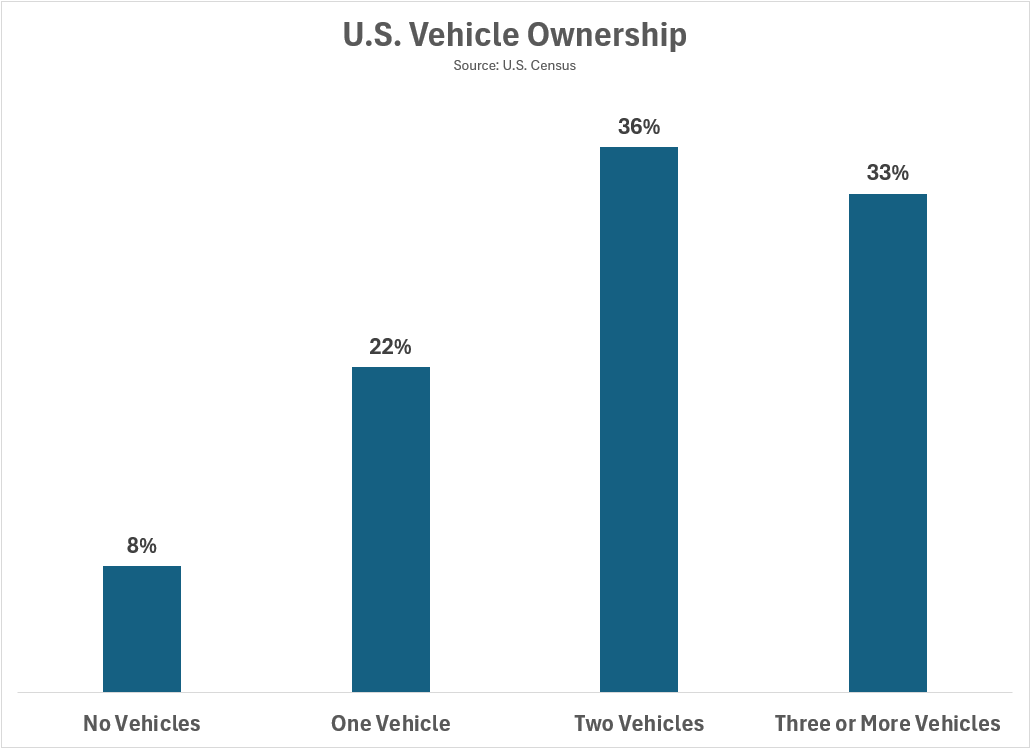
Depreciating Financial Assets – A Wealth of Common Sense
How did your country report this? Share your view in the comments.
Diverging Reports Breakdown
Depreciating Financial Assets
In the early 1900s, a doctor and his chauffeur were the first people to drive across the country successfully in an uncovered car. By the 1940s, cars were enclosed, had much more powerful engines, improved transmissions, could go faster and you now had some highways to drive on. The average brand-new vehicle costs around $50k and depreciates by almost $5k a year in the first 5 years of ownership. The vehicles that lose their value the fastest tend to be the luxury brands2 that people pay up for. It’s almost unfair to include vehicles in the same definition as actual financial assets. The cost of owning an automobile is a necessary form of consumption for most people but the cost of ownership — insurance, repairs, maintenance, financing costs — have all gotten much worse this decade. The Wall Street Journal notes the average age of passenger cars on the road today is 14.5 years.
By 1910, there were nearly half a million cars. By the start of the Great Depression in 1929 it had skyrocketed to 23 million.
Just 2% of households owned a car in 1910. By 1940, it was more than 90%.
Today, 70% of U.S. households have access to two or more vehicles:
There were two main reasons vehicle ownership exploded higher in the early-20th century: (1) consumer credit and (2) the assembly line.
Most people couldn’t afford to buy a car with cash (which is still true today), so they financed it.
Henry Ford’s assembly line brought the cost of early models down considerably. According to Robert Gordon the cost of owning an automobile declined by 78% between 1912 and 1930. Plus, the quality of the vehicles improved by leaps and bounds as well.
In the early 1900s, a doctor and his chauffeur were the first people to drive across the country successfully. They went from San Francisco to New York in 63 days in an uncovered car.1 By the 1940s, cars were enclosed, had much more powerful engines, improved transmissions, could go faster and you now had some highways to drive on.
The quality of vehicles continues to improve. We now have Apple CarPlay, navigation, rear cameras, all kinds of sensors, heated steering wheels, heated seats and self-driving capabilities.
Unfortunately, the costs are not falling now like they were back in the day.
Owning a vehicle is an expensive proposition that’s becoming increasingly more costly each year.
Here are stats and figures from a recent report by The Wall Street Journal:
The total cost to own and operate an automobile averaged $12,296 in 2024 (30% higher than a decade ago)
New-vehicle prices now average $48,883
Used cars now average around $25,500
Average insurance costs rose 10% in 2024, after soaring 15% in 2023
Full-coverage auto policies now average $2,680 annually, up 12% from June 2024
The average new vehicle loses $4,680 in value every year over the first five years
In the last quarter 2024, one in four consumers were underwater on a car loan
Garage repair costs are up over 43% in six years
The average single repair across all types of vehicles was $838 in 2024
The cost of fixing damaged cars has skyrocketed 28% since 2021
There’s a lot to digest but the one I want to focus on here is depreciation.
The average brand-new vehicle costs around $50k and depreciates by almost $5k a year in the first 5 years of ownership. That means the value of your automobile is essentially cut in half after 5 years.
Interestingly, the vehicles that lose their value the fastest tend to be the luxury brands2 that people pay up for:
It’s almost unfair to include vehicles in the same definition as actual financial assets.
Owning an automobile is a form of consumption. It’s a necessary form of consumption for most people but the cost of ownership — insurance, repairs, maintenance, financing costs — have all gotten much worse this decade.
The cost of owning an automobile goes far beyond your monthly payment.
The good news is cars are lasting longer than ever before. The Journal notes the average age of passenger cars on the road today is 14.5 years.
Sticking with the same vehicle for a longer period is likely your best option for saving money on the cost of ownership.
And don’t buy a new car/truck/SUV if you can’t afford it.
Michael and I talked about car ownership costs and much more on this week’s Animal Spirits video:
Subscribe to The Compound so you never miss an episode.
Further Reading:
Is Auto Insurance Becoming a Crisis?
84 Month Auto Loans?!
Now here’s what I’ve been reading lately:
Books:
1Interesting fact of the day — the first stop sign appeared in Detroit in 1915.
2Not all luxury brands. A Porsche tends to hold its value better than most cars.
Source: https://awealthofcommonsense.com/2025/06/depreciating-financial-assets/
